TLDR
Stockholm mixes medieval charm with modern culture across 14 islands. From 17th-century warships to ABBA memorabilia, these 21 attractions showcase why Sweden's capital captivates millions of visitors every year.
I've walked Stockholm's cobblestones more times than I can count, and this city never stops surprising me.
Built across 14 islands where Lake Mälaren meets the Baltic Sea, Sweden's capital mixes medieval alleyways with modern museums and waterfront views. You've got 17th-century warships, ABBA memorabilia, and churches older than most European cities.
After exploring everything from royal palaces to hidden runestones, I've learned which attractions deliver and which waste your time. This guide covers 21 spots that showcase Stockholm's real character beyond the typical tourist circuit.
1. Gamla Stan (Old Town)
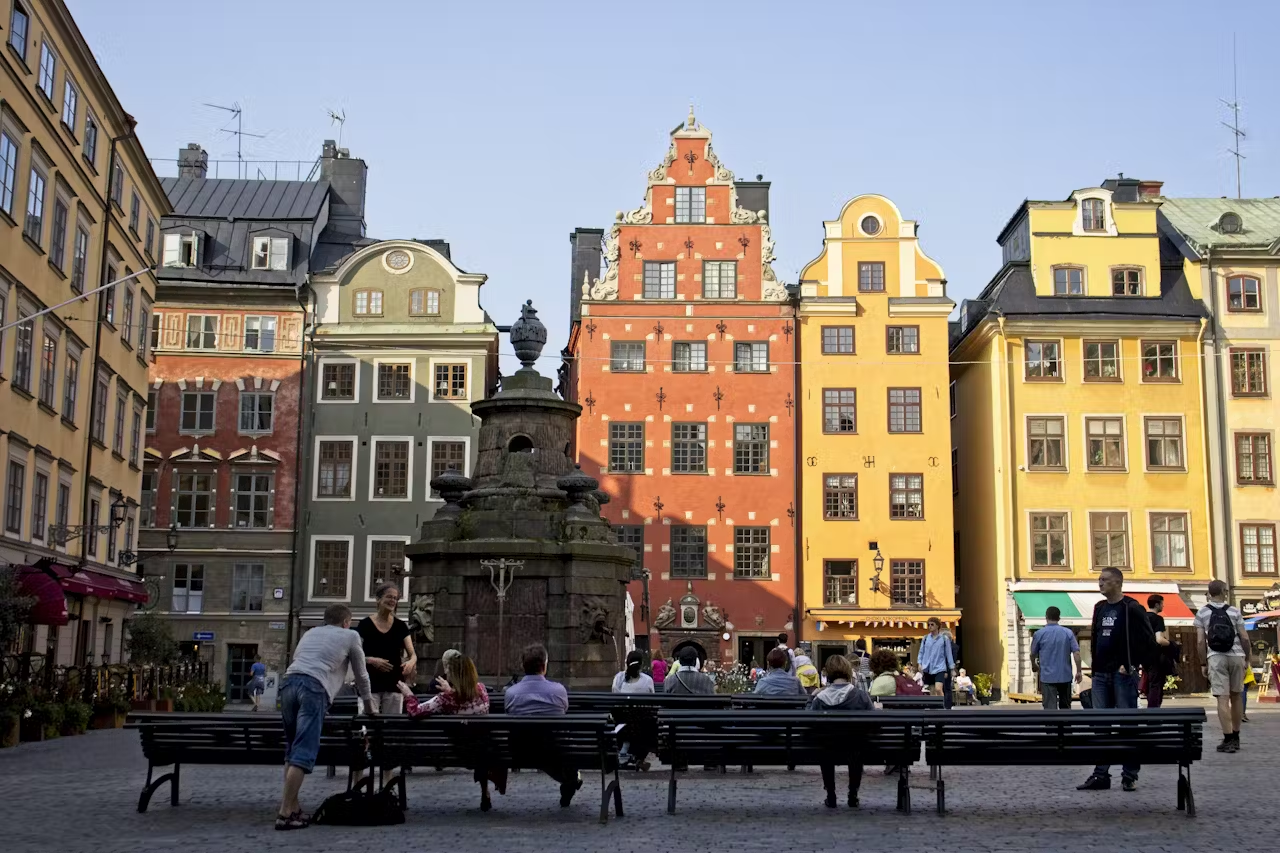
Gamla Stan is where Stockholm began, and it's still the city's heart. These narrow cobblestone streets date back to the 13th century, and unlike many rebuilt European old towns, these buildings are authentic.
I spent hours wandering alleyways like Mårten Trotzigs Gränd, only 90 centimeters wide at its narrowest point. The colorful buildings in ochre and mustard yellow create a storybook atmosphere. Sure, Västerlånggatan has tourist shops, but duck into side streets for authentic cafes where locals actually hang out.
The architecture alone makes it worthwhile despite the crowds.
Did You Know? Gamla Stan sits on three islands: Stadsholmen, Riddarholmen, and Helgeandsholmen, making it one of Europe's largest and best-preserved medieval city centers.
2. Vasa Museum

The Vasa Museum houses Sweden's most embarrassing historical moment. The Vasa warship sank on its maiden voyage in 1628 after sailing less than a nautical mile from Stockholm harbor, too top-heavy with cannons and decorative sculptures.
What makes this incredible is the ship is 98% original material. I walked around all seven levels viewing the 69-meter vessel from different angles. The scale is mind-blowing, covered in hundreds of carved wooden sculptures.
The museum explains not just the sinking but also the 1961 salvage operation and what they found inside.
Did You Know? The Vasa sank just 120 meters from where it was launched, and over 30 people died when it went down, though the exact number remains unknown.
3. Stockholm City Hall

Stockholm's City Hall is where the Nobel Prize banquet happens every December and one of the city's most distinctive buildings. That 106-meter tower defines the skyline from the water.
I took a guided tour (required), and the Golden Hall lived up to expectations with 18 million gold mosaic tiles depicting Swedish history. The Blue Hall isn't actually blue, the architect liked the exposed brick so much he never painted it.
If you climb the tower, expect excellent city views but no elevator for those 365 steps.
Did You Know? More than 8 million bricks and 19 million gilded mosaic tiles were used to build Stockholm City Hall, which took 12 years to complete.
4. Djurgården

Djurgården is Stockholm's green lung where I go for breaks without leaving the city. This island started as a royal hunting ground in the 16th century (the name means "animal garden"), and now it's packed with museums, parks, and walking paths.
Rent a bike at the bridge and cycle the entire island in a few hours. What I appreciate is how it mixes culture and nature with world-class museums like Vasa and ABBA next to forests and waterfront trails.
Spring cherry blossoms are beautiful, though summer weekends get crowded with picnicking families.
Did You Know? Djurgården attracts approximately 15 million visitors annually, making it one of Stockholm's most visited areas despite being largely green space.
5. Skansen Open-Air Museum
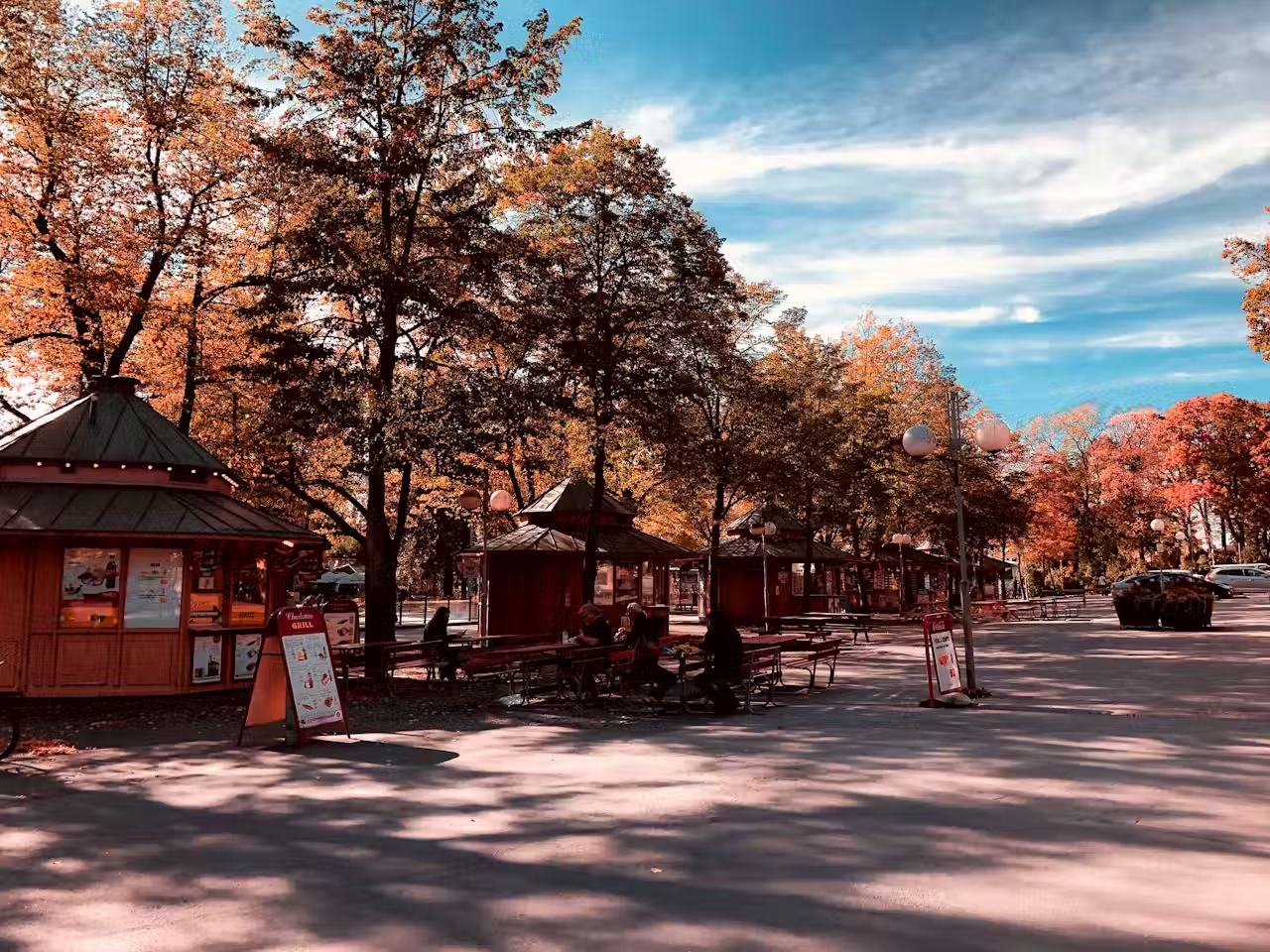
Skansen claims to be the world's first open-air museum, founded in 1891, basically the entire history of Sweden condensed into one hillside. They've got 150 historical buildings moved here from across the country, showing how different regions lived before industrialization.
I watched glassblowers and bakers demonstrating traditional Swedish trades. The Nordic animal park has wolves, lynx, brown bears, and moose in large natural enclosures. Skansen gets lively during Swedish holidays like Midsummer and Christmas with traditional celebrations.
Budget at least half a day because the site is huge.
Did You Know? Skansen celebrated Swedish National Day for the first time in 1893, establishing traditions that are still followed across Sweden today.
6. ABBA The Museum

You don't need to be an ABBA superfan to enjoy the ABBA Museum, though it helps. The interactive elements make this more experience than traditional museum.
I sang "Waterloo" in a recording booth, tried on digital costumes, and stood on stage with holographic band members. The collection includes original instruments, gold records, and sequined stage outfits. The museum tells ABBA's story from their 1974 Eurovision win through massive success to their 1982 split.
One warning: it gets packed during summer, so book online and visit early or late.
Did You Know? ABBA has sold more than 385 million records worldwide, making them one of the best-selling music artists of all time.
7. Fotografiska
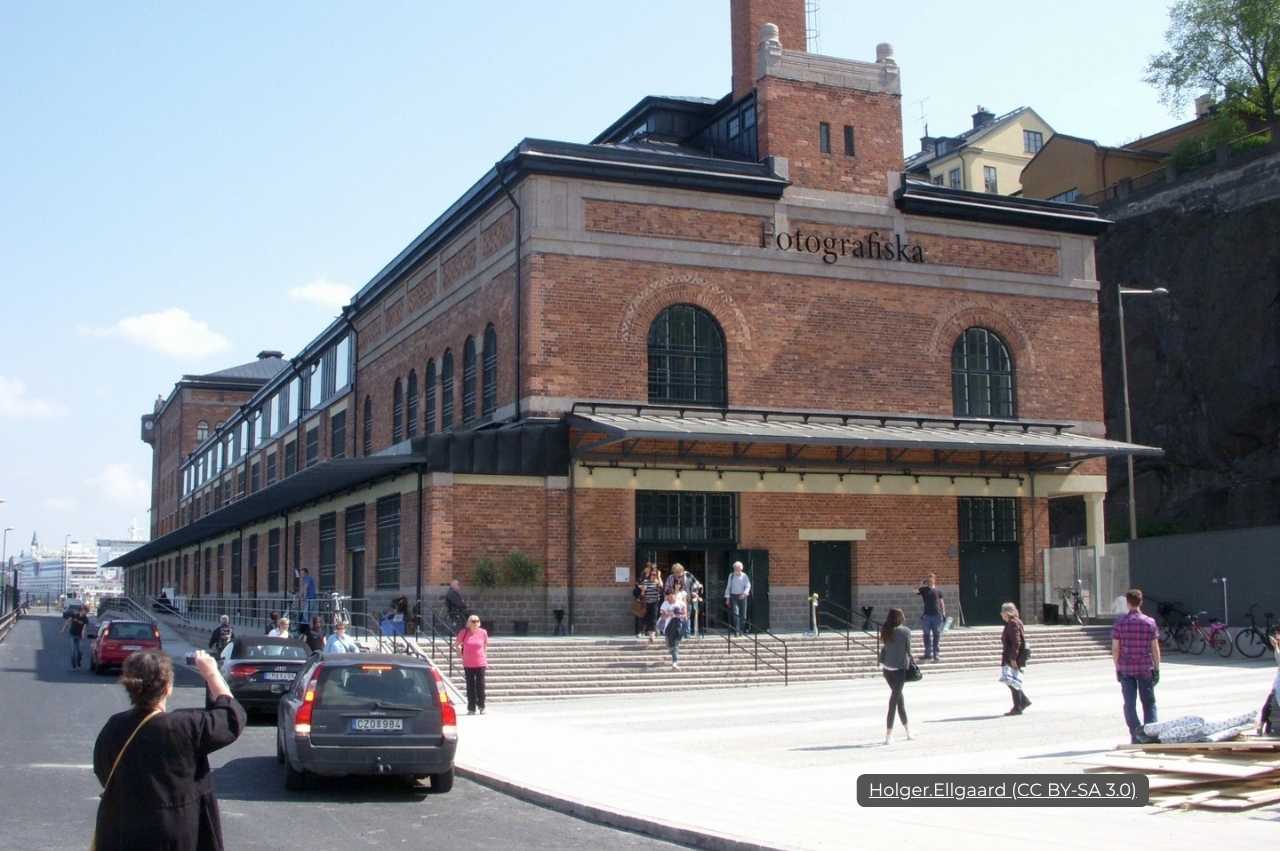
Fotografiska has become one of Stockholm's coolest cultural spaces since opening in 2010. This photography museum occupies an old customs house on Södermalm's waterfront, rotating exhibitions constantly so you never see the same show twice.
I've seen everything from fashion photography to photojournalism here. The industrial architecture with massive windows overlooks the water beautifully. The rooftop restaurant has won awards with some of Stockholm's best views looking across to Djurgården.
They're open late until 11 PM daily, perfect for evening visits. The gift shop stocks excellent photography books and prints.
Did You Know? Fotografiska presents more than 20 major exhibitions per year, featuring both established photographers and emerging talents from around the world.
8. Royal Palace
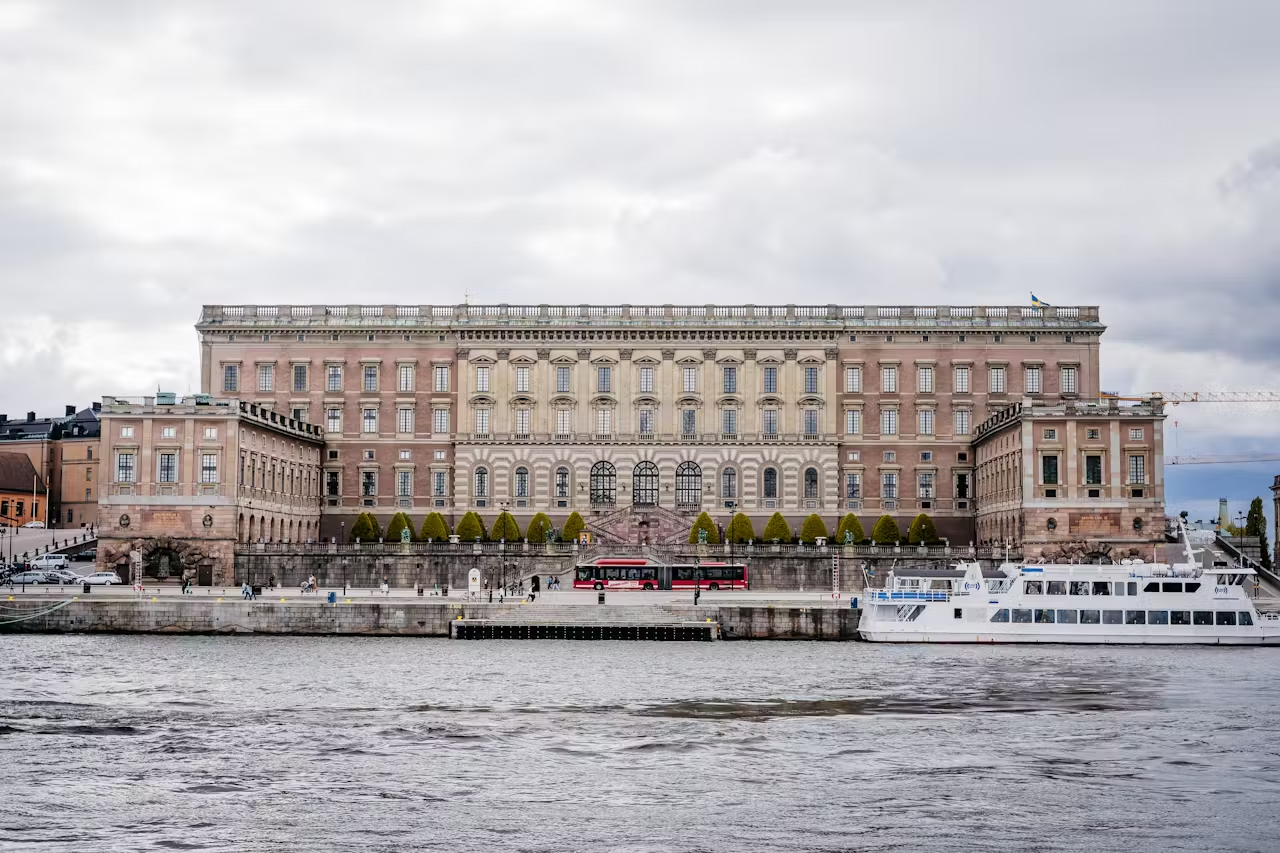
Stockholm's Royal Palace is one of Europe's largest with over 600 rooms, though only a fraction are open to visitors. The current baroque building replaced the medieval Tre Kronor castle that burned down in 1697. What makes visiting interesting is you're touring a working palace where state functions still happen.
I visited the Royal Apartments, the Treasury with crown jewels, and Royal Armoury in the basement. The Changing of the Guard happens daily at 12:15 PM in the outer courtyard. Combination tickets covering multiple sections save money if you want everything.
Did You Know? The Royal Palace was built on the ruins of the Tre Kronor castle and took 57 years to complete, finally finishing in 1754.
9. Stortorget
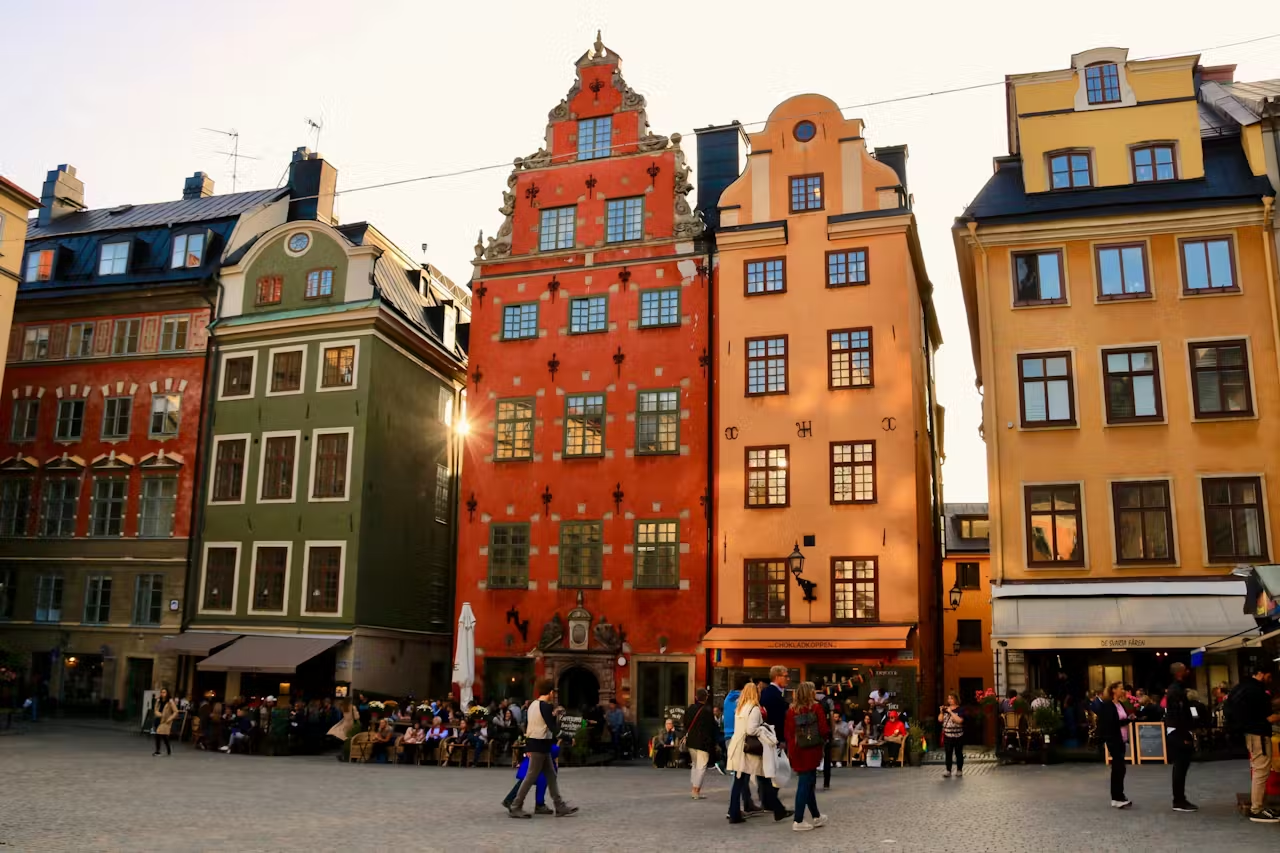
Stortorget is Gamla Stan's main square and probably Stockholm's most photographed spot. The colorful merchants' houses date back to the 15th and 16th centuries, painted in shades of red, gold, and yellow.
I always end up back here because it's centrally located and surrounded by attractions. The square witnessed the Stockholm Bloodbath of 1520 when Danish King Christian II executed 82 Swedish nobles. These days it's more pleasant, filled with cafes for outdoor sitting in summer.
The December Christmas market transforms Stortorget into something magical with wooden stalls selling handicrafts and glögg.
Did You Know? The Stockholm Bloodbath is commemorated by 82 white stones set into the facade of one of the buildings on Stortorget's north side.
10. Nobel Prize Museum
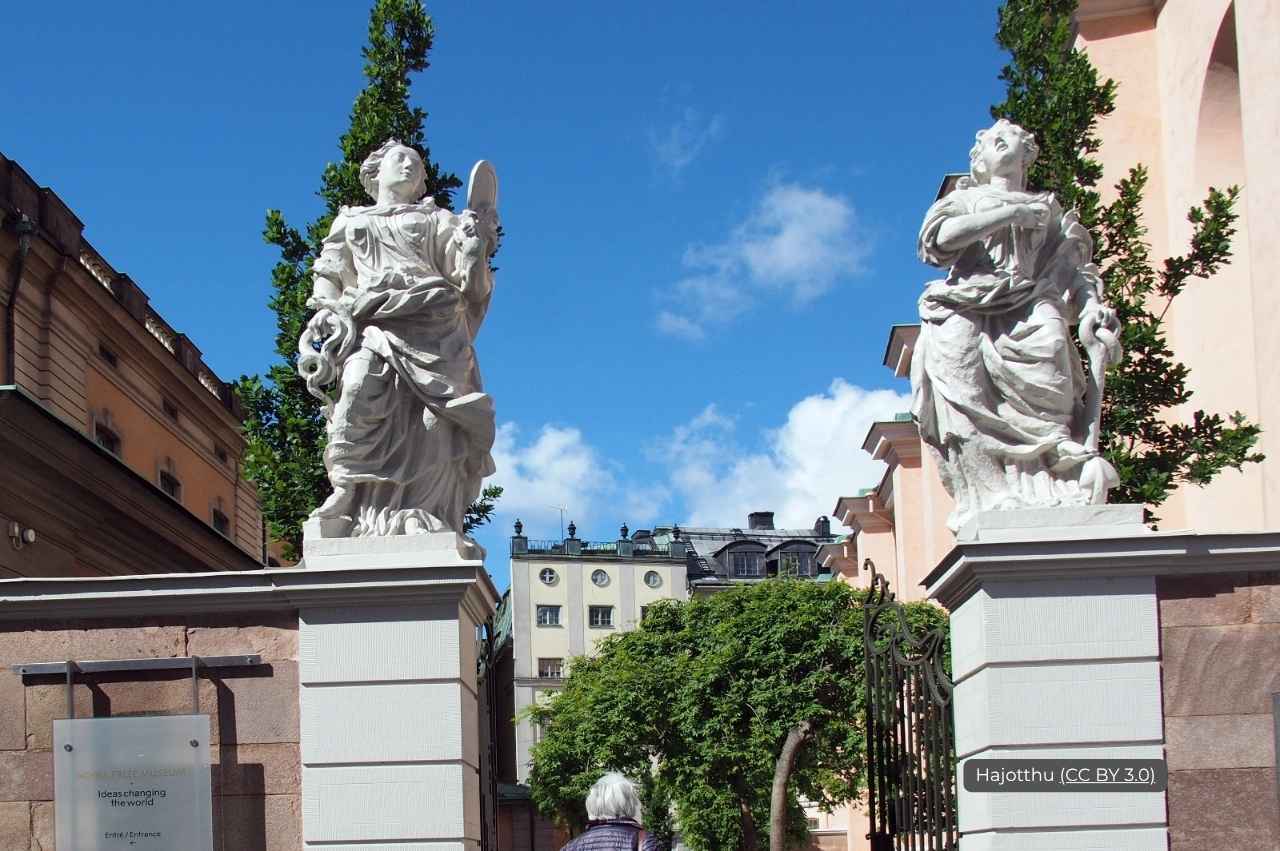
The Nobel Prize Museum sits in the former Stock Exchange building on Stortorget and tells stories behind one of the world's most prestigious awards. Alfred Nobel, the Swedish chemist who invented dynamite, left his fortune to establish prizes recognizing achievements benefiting humanity.
I found the museum surprisingly engaging for something focused on academic work. They rotate laureate portraits on overhead cables, and personal artifacts donated by winners appear throughout. Guided tours provide context you'd miss otherwise.
The bistro downstairs is popular, and visiting laureates famously sign the underside of chairs.
Did You Know? Alfred Nobel held 355 patents during his lifetime and could speak five languages fluently: Swedish, Russian, French, English, and German.
11. Stockholm Cathedral (Storkyrkan)
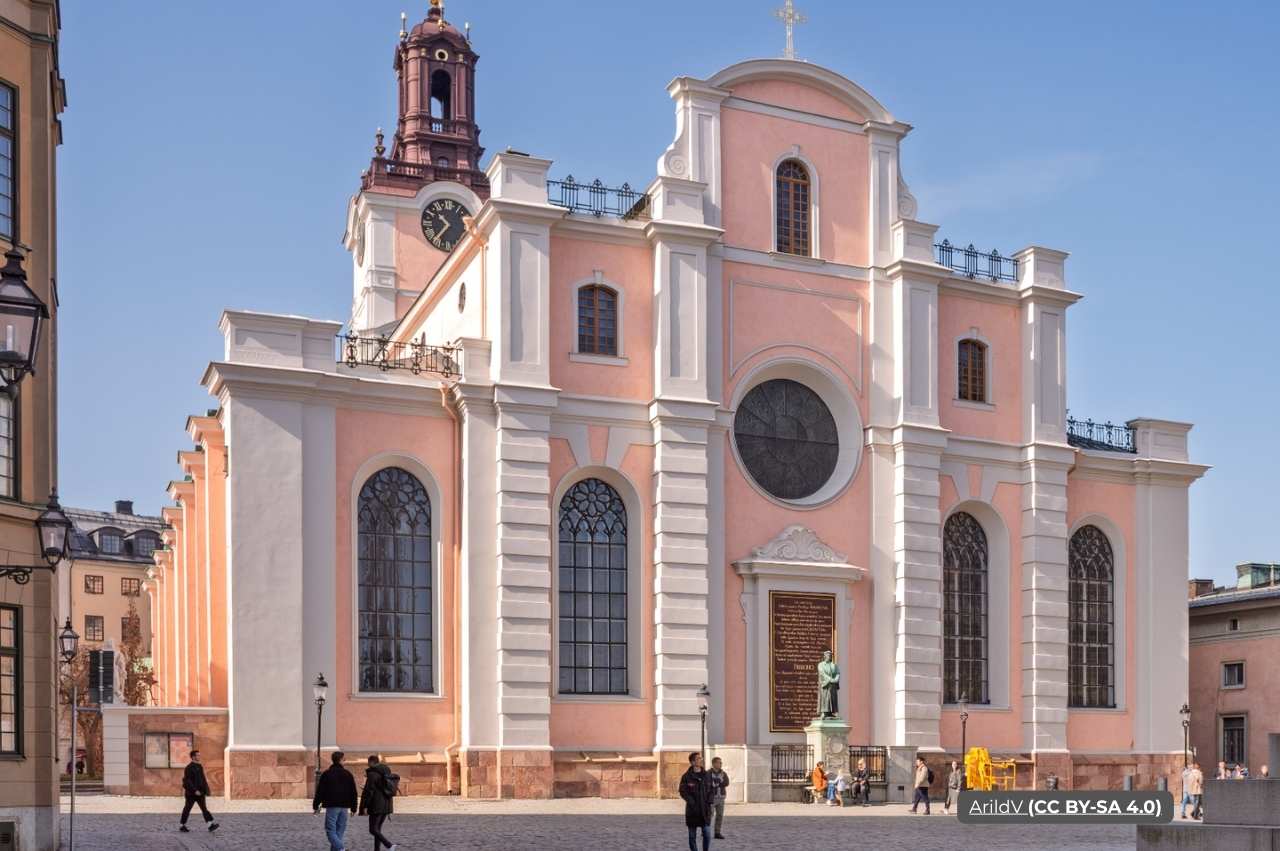
Storkyrkan is Stockholm's oldest building, consecrated in 1306, and serves as the city's cathedral. From outside it looks plain, but inside you're hit with dramatic Gothic-Baroque interior developed over centuries. The massive statue of St. George and the Dragon, carved by Berndt Notke in 1489, dominates the nave.
I attended an organ concert here with incredible acoustics. Royal pews by Nicodemus Tessin show the church-state connection defining Swedish history. Many Swedish monarchs were crowned here, and royal weddings still happen occasionally.
Check the schedule for free concerts.
Did You Know? Storkyrkan was where Sweden's Protestant Reformation began when Olaus Petri preached the first Lutheran sermon in Swedish rather than Latin in 1525.
12. German Church (Tyska kyrkan)

The German Church has Stockholm's most recognizable spire, a 96-meter copper-topped tower dominating Gamla Stan's skyline. Built for the city's German-speaking merchant community in the 17th century, this Baroque church reflects how important German trade was to medieval Stockholm.
The interior is stunning with elaborate wooden galleries, 119 biblical paintings, and an ornate royal gallery built for Queen Hedvig Eleonora. The organ is a 2004 replica of the original Baroque instrument. The church still holds German-language services today.
There's an entrance fee unlike many Stockholm churches.
Did You Know? The German Church's southern portal features statues representing Jesus, Moses, Love, Hope, and Faith, carved in the 1640s by Westphalian sculptor Jost Henne.
13. Riddarhuset (House of Nobility)

Riddarhuset is one of Stockholm's finest Baroque buildings, still used by Sweden's nobility for meetings and events. Built in the 1650s for noble families, it served as an aristocratic parliament until 1866. The Great Hall's walls are covered with over 2,300 noble family coats of arms arranged by rank.
I took a guided tour (required for entry), learning about the Swedish nobility system and seeing the speaker's podium where nobles debated policy for centuries. The building's exterior is beautifully proportioned with typical Swedish Baroque decoration.
It's not on every tourist's radar.
Did You Know? Riddarhuset is still owned and operated by the Swedish nobility and serves as a meeting place for noble families, though Sweden's nobility lost political power in 1866.
14. Swedish Parliament (Riksdagshuset)

The Swedish Parliament sits on Helgeandsholmen, a small island between Gamla Stan and the mainland. The current neoclassical building was completed in 1905, though parts date to the 17th century. Sweden's parliament operates on transparency principles, and you can attend parliamentary sessions when in session.
The building connects to older structures through underground passages creating a complex mixing centuries of architecture. Free summer tours are available in multiple languages. Security is relaxed compared to other countries' parliaments.
Did You Know? Sweden has one of the world's oldest parliaments, with origins dating back to 1435, though the current unicameral system was only established in 1971.
15. Gröna Lund

Gröna Lund is Stockholm's amusement park, squeezed onto a narrow Djurgården strip. What makes it unique is how they've packed rides into small space by building upward instead of outward.
The park dates back to 1883, though most rides are modern. The Free Fall drop tower and Twister roller coaster offer thrills with views over Stockholm's waterways. They book major music acts for summer concerts. The vintage carousel provides historical charm among modern rides. It's pricey like most Swedish parks, but the summer evening atmosphere is great.
Go weekdays because weekend waits run long.
Did You Know? Gröna Lund is one of Scandinavia's oldest amusement parks and hosts around 60-70 concerts each summer featuring international artists.
16. Nordiska Museet (Nordic Museum)
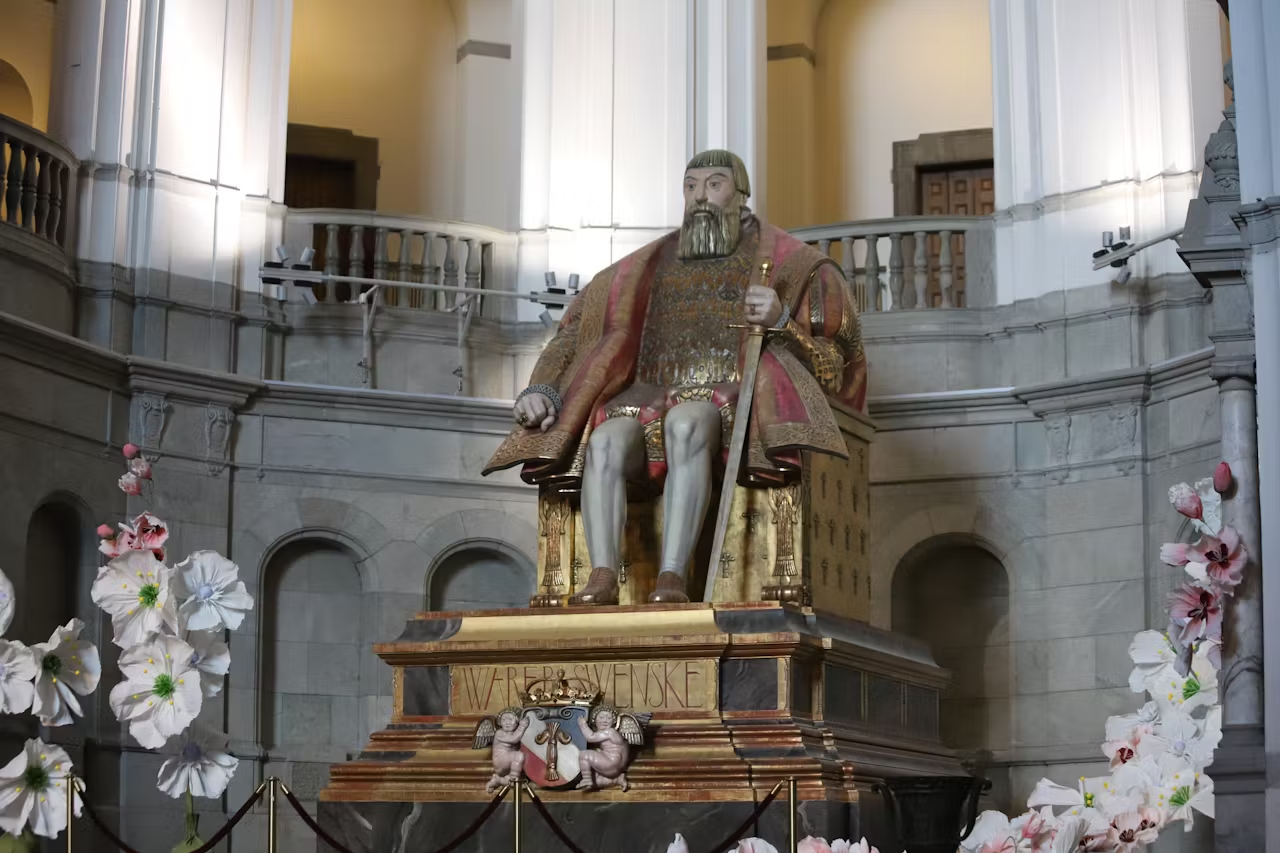
The Nordiska Museet looks like a cathedral from outside and holds 500 years of Swedish cultural history inside. Founder Artur Hazelius wanted to document Swedish life before industrialization changed everything, resulting in this massive collection of furniture, textiles, folk costumes, and everyday objects.
I spent a whole afternoon exploring different periods and regions. The Great Hall features a giant King Gustav Vasa statue, and the table-setting exhibition showing how Swedes celebrated holidays through centuries was surprisingly interesting. The 1907 Neo-Renaissance building itself is worth admiring.
It's less crowded than Vasa or ABBA.
Did You Know? The Nordiska Museet building was designed by Isak Gustaf Clason and required 19 years to construct, finally opening in 1907.
17. Riddarholmen Church
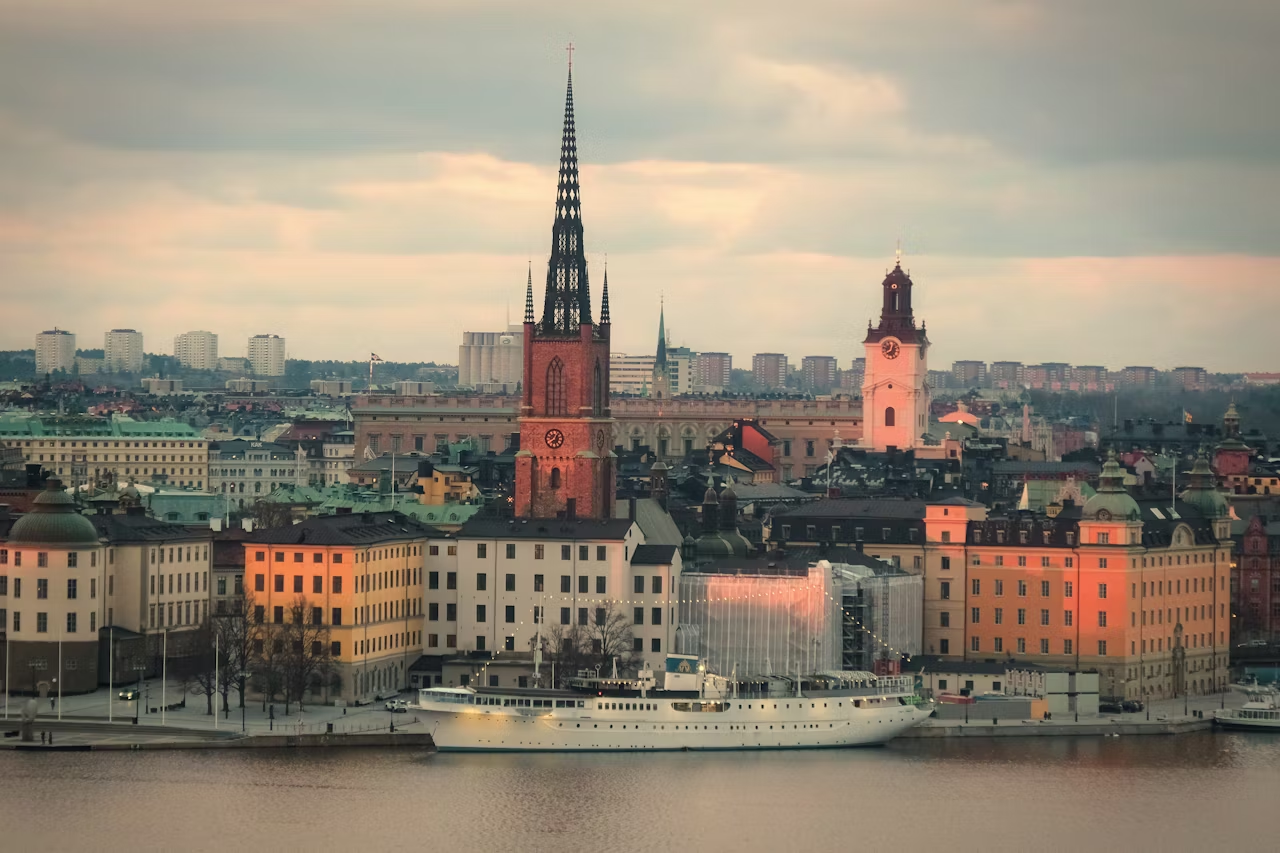
Riddarholmen Church is the final resting place for Swedish monarchs and one of Stockholm's oldest buildings. The church dates to the 13th century as part of a Franciscan monastery. Inside you'll find elaborate sarcophagi and memorial plaques for Swedish kings and queens from the past 400 years.
The church stopped regular services after an 1835 fire, now exclusively a burial church and museum. The cast-iron spire added after the fire creates a distinctive silhouette visible across water. The history is fascinating, showing how Swedish royalty's burial practices evolved. It's only open summers.
Did You Know? Riddarholmen Church contains the remains of all Swedish monarchs from Gustav II Adolf (died 1632) to Gustaf V (died 1950), with only two exceptions.
18. Kungsträdgården
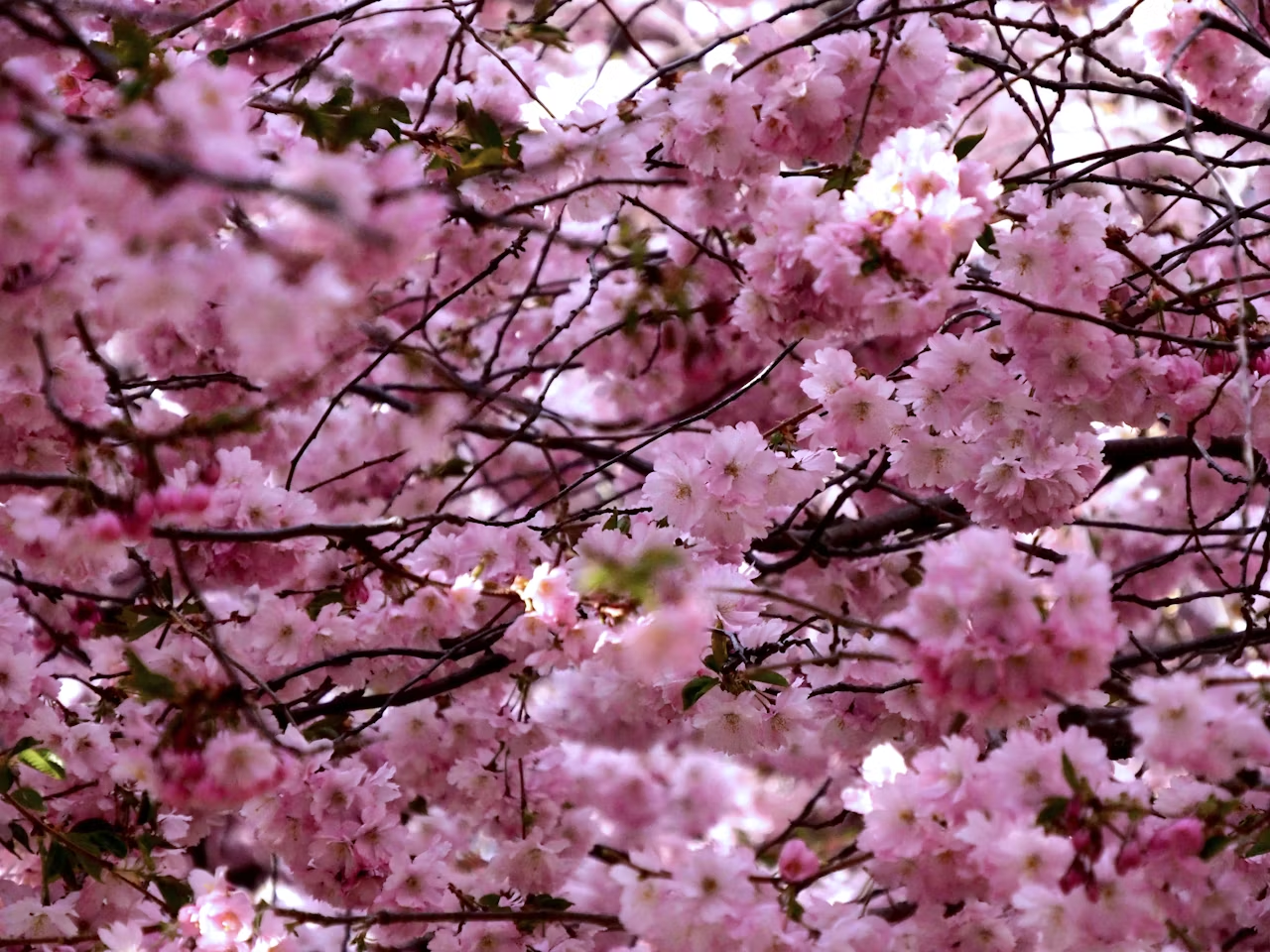
Kungsträdgården means "King's Garden," and this central park has been Stockholm's outdoor living room for centuries. The park started as a royal kitchen garden in the 1400s but opened publicly in the 18th century.
I love coming here because something's always happening, whether markets, concerts, or festivals. Spring brings crowds for cherry blossom displays with Japanese-gifted trees creating pink canopies. Winter brings outdoor ice skating on a rink running the park's length.
The park stretches from Strömgatan to the waterfront with cafes lining both sides. It's free, central, and shows how Stockholmers use public spaces.
Did You Know? The cherry trees in Kungsträdgården were gifted to Stockholm by Japan in the 1990s and bloom for approximately two weeks each April, drawing thousands of visitors.
19. The Stable Bridge (Stallbron)

The Stable Bridge doesn't look like much, just a modest stone bridge connecting Helgeandsholmen to Stadsholmen in Gamla Stan. But this is one of Stockholm's oldest bridges with parts dating to the 1300s. The current structure was rebuilt in the 1800s, but the location has been a critical crossing for centuries.
I mention it because it offers excellent Royal Palace and waterfront views, a nice spot to pause between attractions. The name comes from royal stables once nearby. You'll probably cross it multiple times while exploring the old town anyway.
Did You Know? The Stable Bridge area was once home to Stockholm's fish market and public executions, making it a center of both commerce and justice in medieval times.
20. Uppland Runic Inscription 53
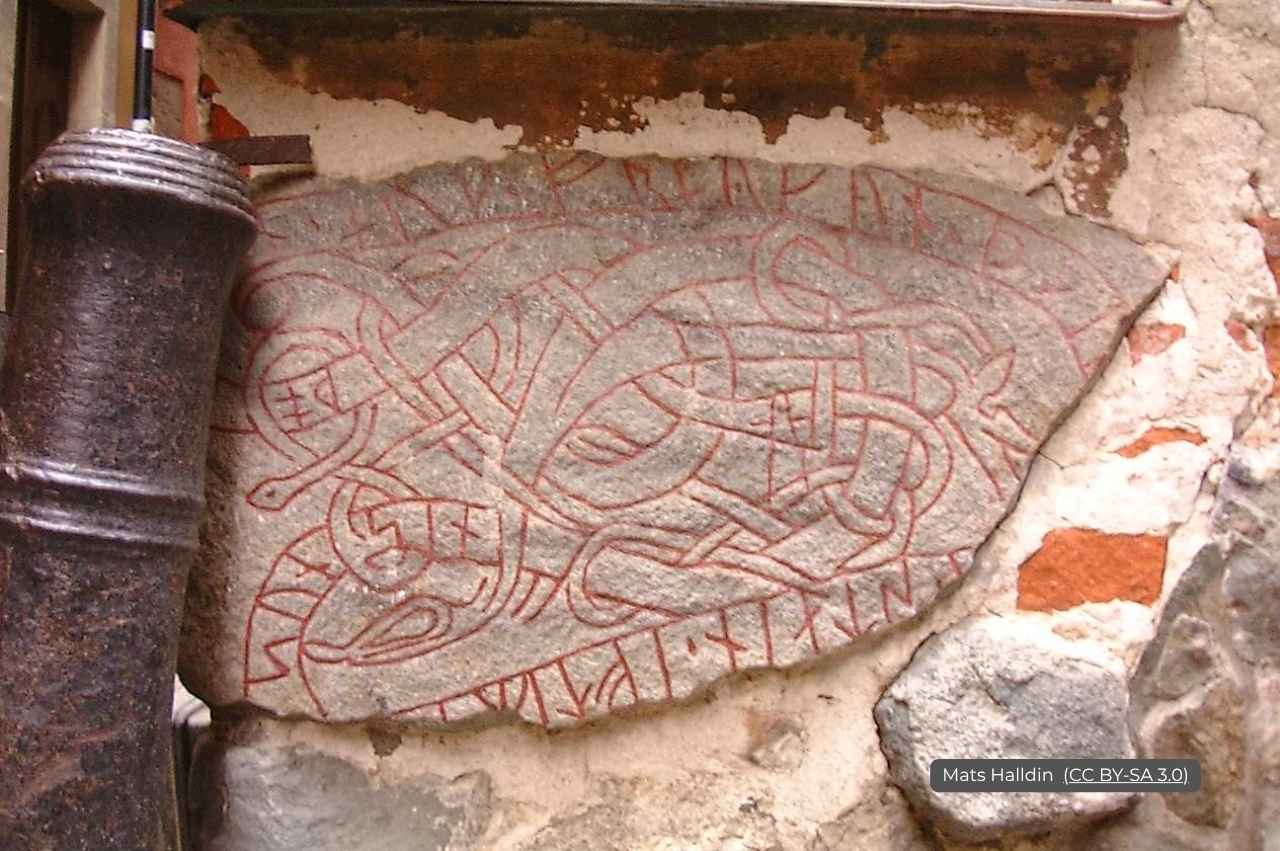
This runestone, known as U 53, sits in a courtyard near the German Church in Gamla Stan and most tourists walk right past it. The stone dates from the 11th century with a runic inscription commemorating two people.
I find it remarkable this Viking-age piece survives in Stockholm's most visited neighborhood. The runes are still clearly visible with an interpretation plaque explaining the inscription. Sweden has thousands of runestones, but finding one in such urban setting connects you directly to the Viking age.
Look for it on Prästgatan street. It takes less than a minute.
Did You Know? Sweden has approximately 3,000 runestones, more than any other country, with most dating from the Viking Age between 800-1100 AD.
21. Stenbock Palace

Stenbock Palace isn't open to the public, but its location across from the Royal Palace and impressive facade make it worth noting. Built in the 1640s for the Stenbock family, one of Sweden's most powerful noble families, the building now houses the Prime Minister's offices.
The yellow baroque facade makes it one of Gamla Stan's most photogenic buildings. I include it because it represents how Stockholm's political power remains concentrated in the medieval city center. You'll walk past it exploring Riddarholmsvägen, and it's worth pausing to appreciate the architecture and historical significance.
Did You Know? Stenbock Palace has served various government functions since the 1700s and has been the Prime Minister's official residence since 1991.
How much time do you need to visit Stockholm?
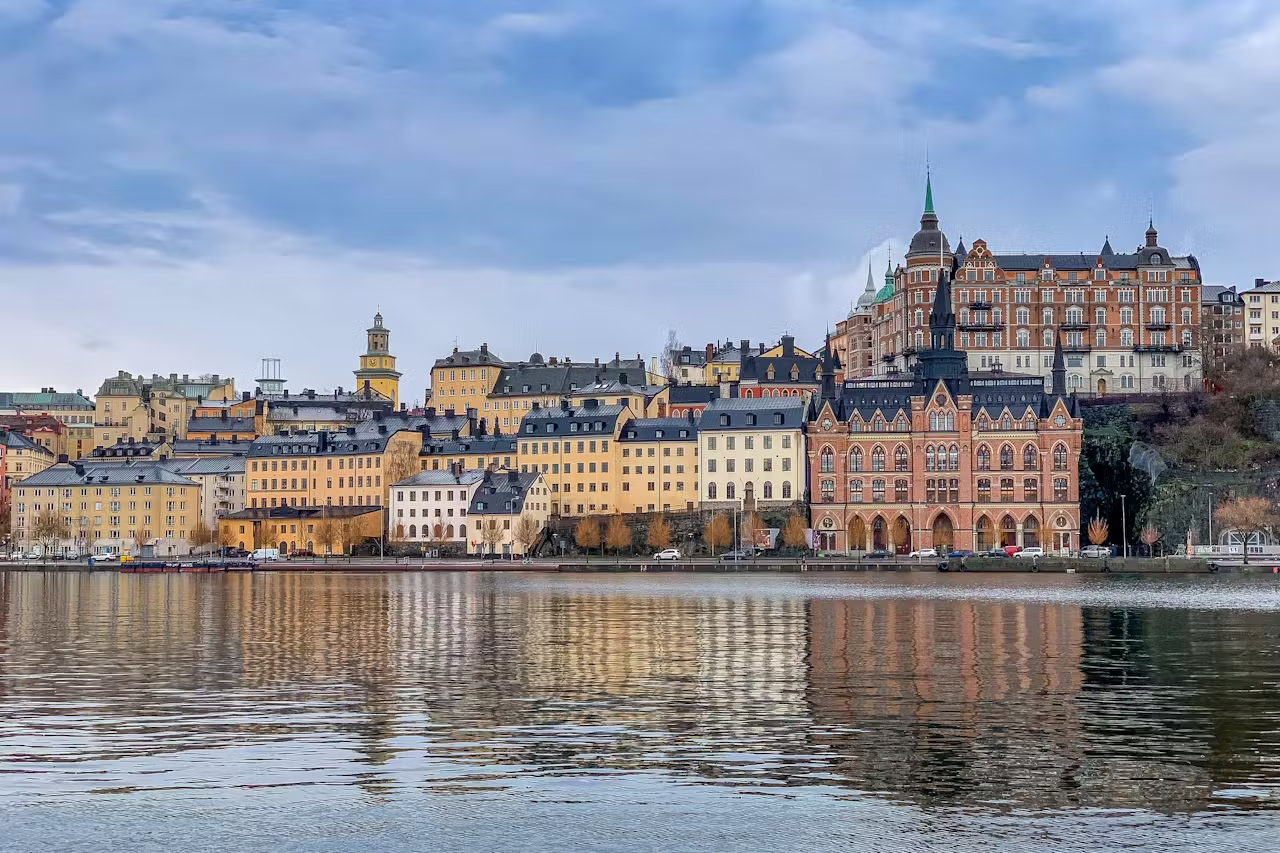
Three to four days gives you enough time without rushing.
I recommend spending one full day exploring Gamla Stan and its museums like the Nobel Prize Museum and Royal Palace. Dedicate another day to Djurgården's museums, particularly Vasa and Skansen, because you can easily spend 3-4 hours at each.
A third day could cover Södermalm's neighborhoods, Fotografiska, and trendy cafes. A fourth day allows boat tours through the archipelago or visiting City Hall. The Stockholm Pass provides entry to many attractions and unlimited transport, potentially saving money if visiting multiple museums daily.
When is the best time to visit Stockholm?
Late spring (May-June) and early fall (September) offer the best balance of good weather, manageable crowds, and reasonable prices. Summer (July-August) brings nearly 18 hours of daylight and temperatures around 20-25°C, but also peak tourist numbers and higher accommodation costs.
I've visited in winter with beautiful snow and Christmas markets, but short days (6 hours of daylight in December) and freezing temperatures aren't for everyone. Spring's cherry blossoms in Kungsträdgården create spectacular April displays. Fall brings stunning foliage and fewer tourists, making popular attractions easier to enjoy.
How do you get around Stockholm?
Stockholm's public transportation makes getting around straightforward. The Tunnelbana (metro) connects major areas with three color-coded lines, many stations featuring impressive artwork. Buses and trams reach Djurgården where there's no metro station.
I found the SL Access card convenient, loading it with money or time-based tickets to tap on readers. Single trips within 75 minutes cost around 39 SEK via app. Walking works well in central areas because Stockholm is compact and pedestrian-friendly. Ferries connect various islands, with some routes included in transit tickets.
Cycling is popular with rental stations citywide.
How much does it cost to visit Stockholm?
Stockholm ranks among Europe's more expensive cities, but you can manage costs with planning. Museum admission typically runs 120-250 SEK for adults.
The Stockholm Pass (around 700 SEK for 24 hours) includes major attractions and can save money visiting multiple sites daily. Restaurant meals average 150-250 SEK for lunch and 250-400 SEK for dinner at mid-range places. I saved money eating lunch specials, cheaper than dinner at the same restaurants, and buying groceries for some meals.
Accommodation costs 800-2000 SEK nightly for hostels to mid-range hotels. Budget 300-500 SEK daily for food.
Is it worth visiting Stockholm?
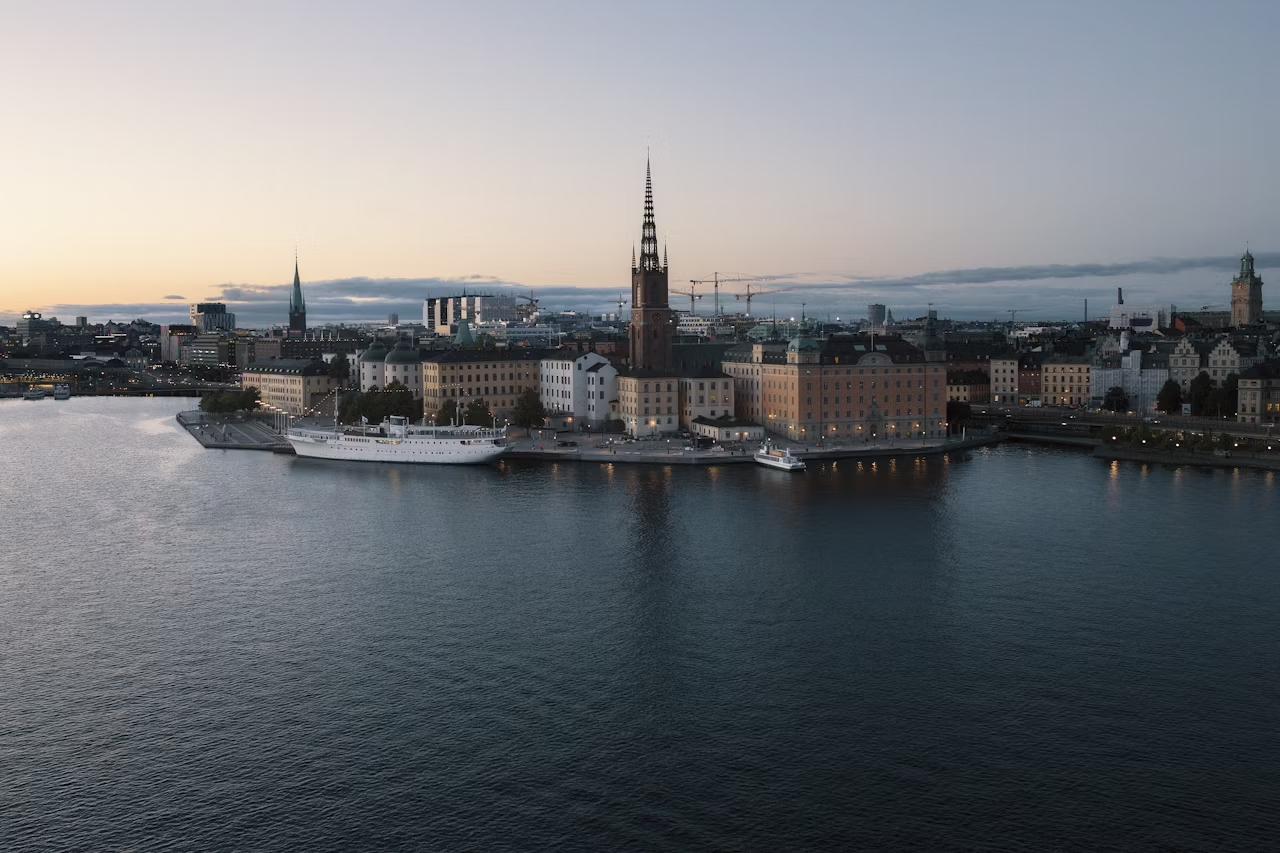
Absolutely. Stockholm delivers that rare combination of history, culture, and natural beauty few capitals match. The city's spread across islands creates visual interest everywhere, with water views from most neighborhoods.
What impressed me most was how Stockholm preserves history without feeling like a museum. Medieval Gamla Stan buildings house working businesses, not just tourist shops. Museums like Vasa and the Nobel Prize Museum present subjects with depth while remaining accessible. The city can be expensive, but free activities and smart planning make it manageable.
Three days minimum gives time to see highlights without rushing.
Ready to discover Stockholm at your own pace?
Skip the generic group tours and create your own personalized adventure with StoryHunt's Personal Tour Guide.
This innovative app generates custom audio walks based on your specific interests, whether you're into Viking history, modern design, or hidden local spots. Just open the interactive map, select what you want to see, and let the app guide you with engaging narration and insider tips.

.webp)


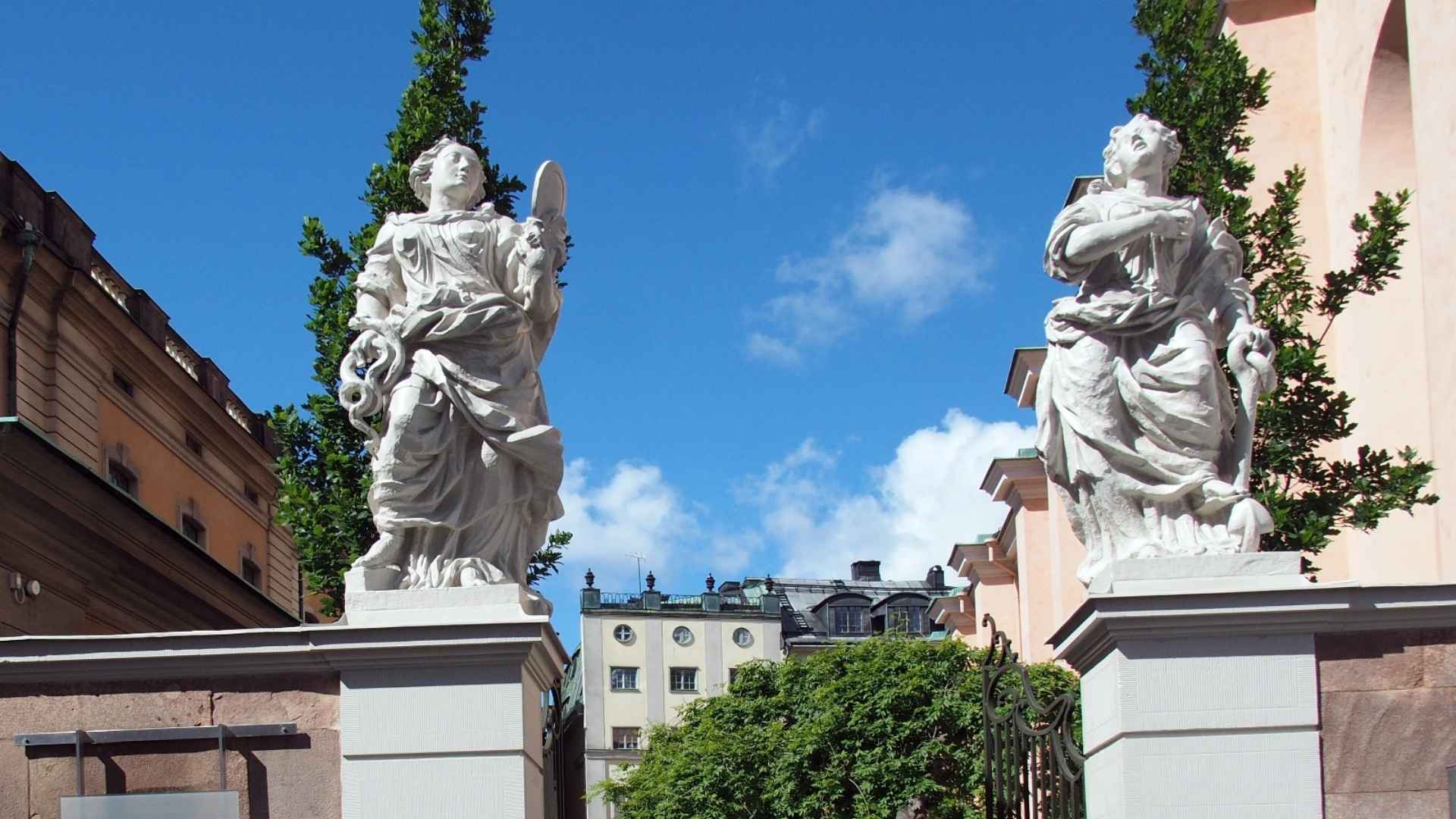



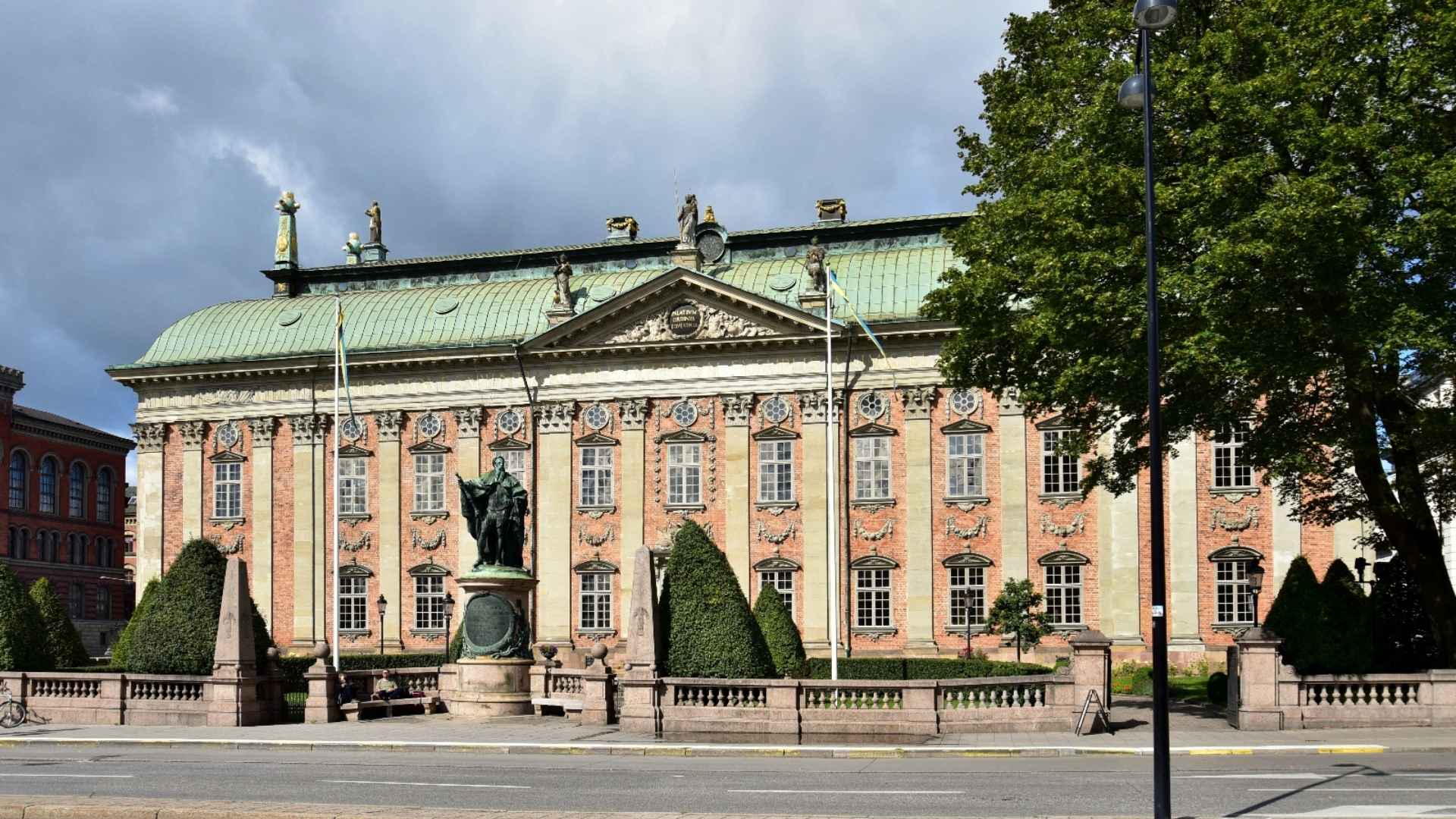




.avif)





